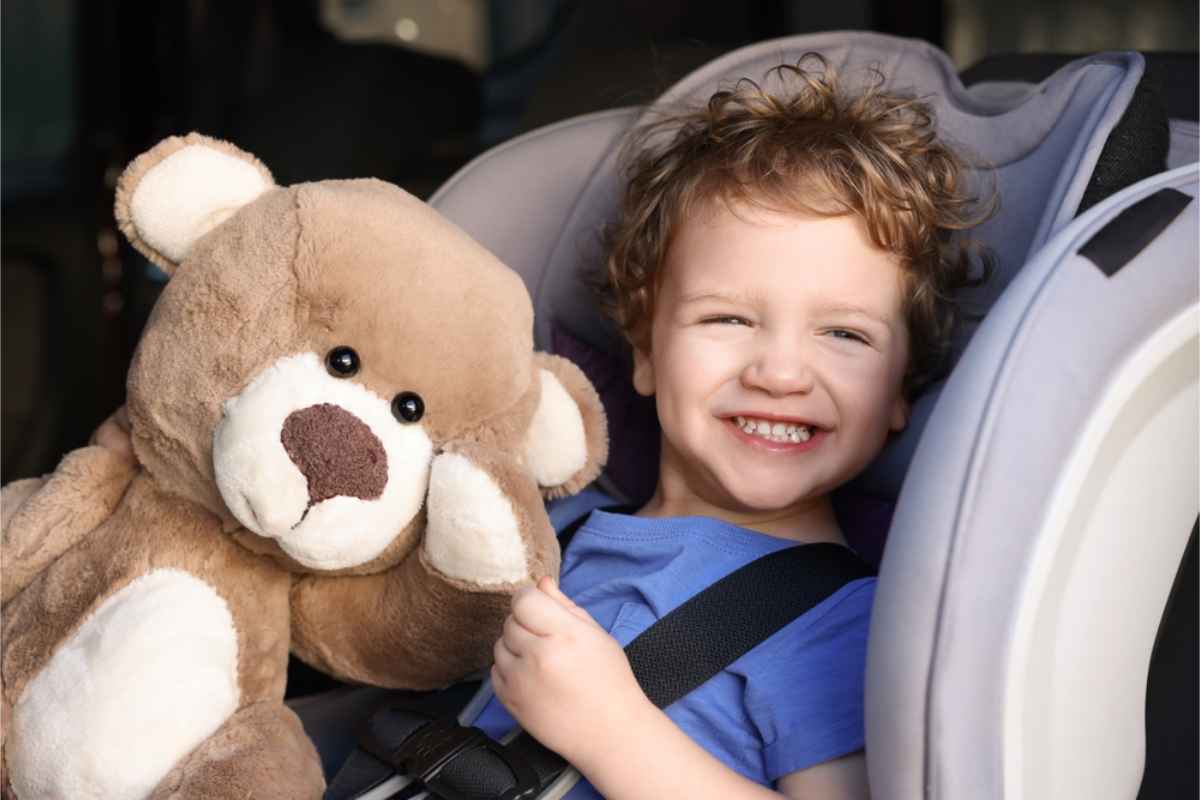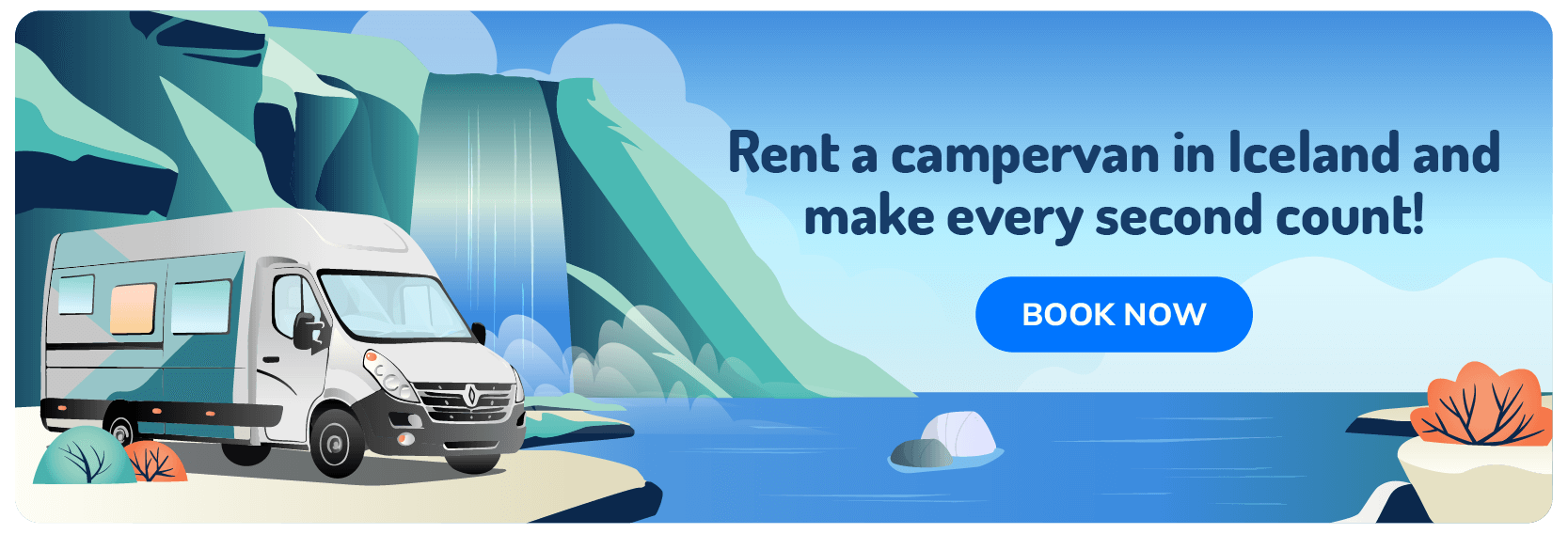Travelling to Iceland with kids in a campervan? Then you need to know about Iceland’s car seat laws. These aren’t just rules on paper. If your ride comes with a fold-out bed and rotating front seats, things can get confusing fast.
- Where can your child sit?
- What kind of seat is legal?
- Should you bring one or rent locally?
This guide breaks it all down in real terms, with straight answers and practical tips. Because nothing kills the mood on day one like finding out your setup isn’t legal or safe for your child. Let’s make sure that never happens to you.
Understanding Iceland’s Car Seat Regulations
Our cops are really strict when it comes to child safety on the road. If your kid is under 135 cm (about 4 feet 5 inches), they legally need to be in a child safety seat. No exceptions.
The Icelandic child car seat law applies to everyone. Locals, tourists, and yes, even if you’re just driving a few kilometers. Break it, and you’re looking at a fine of ISK 30,000, which is around 230 USD.
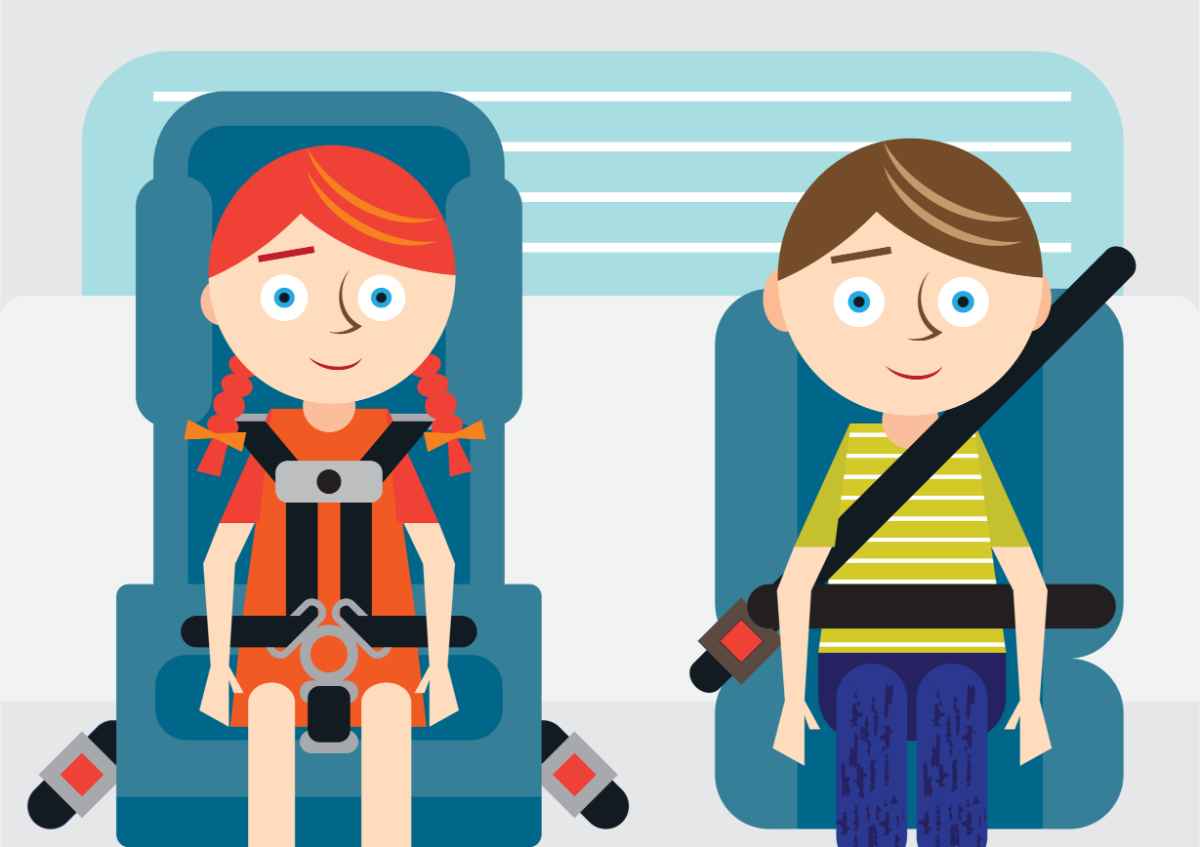
What the Law Says About Child Safety Seats in Iceland
Here’s what actually matters:
- Car seats are required for all kids under 135 cm. A seat belt alone won’t cut it.
- No front seat for kids under 135 cm if there’s an active airbag. If the airbag can be switched off and no rear seat is available, a rear-facing seat may go in the front.
- Car seats must follow European safety standards:R129 (i-Size) or older R44/04 (if not expired).
- Seats must be properly installed and suited to both the child and the vehicle.
- Children over 135 cm but under 15 years must still wear a seatbelt.
Height and Weight Requirements for Different Car Seats
The rules don’t go by age alone. The car seat laws of Iceland are based on a combination of height, weight, and safety, not just birthdays.
Use the table below to match your child to the correct seat:
|
Age Range |
Weight |
Seat Type Required |
Notes |
|
Infants (0–2 years) |
0–13 kg (0–29 lbs) |
Rear-facing car seat |
Required until 76 cm (2 ft 6 in) and 15 months. Rear only if airbag is active. |
|
Toddlers (1–4 years) |
9–18 kg (20–40 lbs) |
Rear-facing as long as possible, then forward-facing with harness |
Rear-facing ideally until age 3. Forward-facing must be in the back. |
|
Children (4–10/12 years) |
15–36 kg (33–79 lbs) |
Booster seat (high-back or backless) |
Booster until child reaches 135 cm (4 ft 5 in). Not allowed under 18 kg. |
|
Older Children |
Over 135 cm (4 ft 5 in) |
Regular seat belt |
Belt must fit properly. Back seat advised until age 12. |
|
Front Seat Access |
N/A |
Must be 150 cm (4 ft 11 in) to sit in front with active airbag |
Strictly enforced. |
Traveling Iceland with Kids in a Campervan
Thinking of exploring Iceland with your little one buckled into the back? Then you’ll want to know upfront: campervans aren’t built like your family SUV. The layout changes everything, and installing car seats can get tricky fast.
Challenges of Installing Car Seats in a Camper or Motorhome
- Seat layout is unpredictable. Some campervans only offer two front seats, which makes installing a child seat in the rear impossible.
- ISOFIX might be missing. Many campers skip ISOFIX or only have lap belts in the back. If your car seat depends on anchor points or a three-point belt, check ahead.
- Airbags and front seats don’t mix. Rear-facing seats in front of an active airbag? Illegal and unsafe. The airbag must be fully disabled.
- No universal layout. Some larger campervans have rear bench seating that works better for car seats, but you’ll need to ask specifically and likely pay more.
- Plan early. Not all campers are family-friendly. Contact your rental company and confirm car seat compatibility before booking.
Where Can a Child Sit in a Campervan or Motorhome?
- Rear seats are preferred. If available, always place your child in the back. It’s safer and legally sound.
- The front seat is the last resort. Children under 135 cm (4.5 ft) must not sit up front with an active airbag. If it's the only option, disable the airbag before installing any child seat.
- Bench seats can help. Larger campers may offer a second row with belts. If you need this setup, book early and confirm the layout.
- No belt? No ride. A seat without a proper restraint system is not an option. Doesn’t matter how short the drive is.
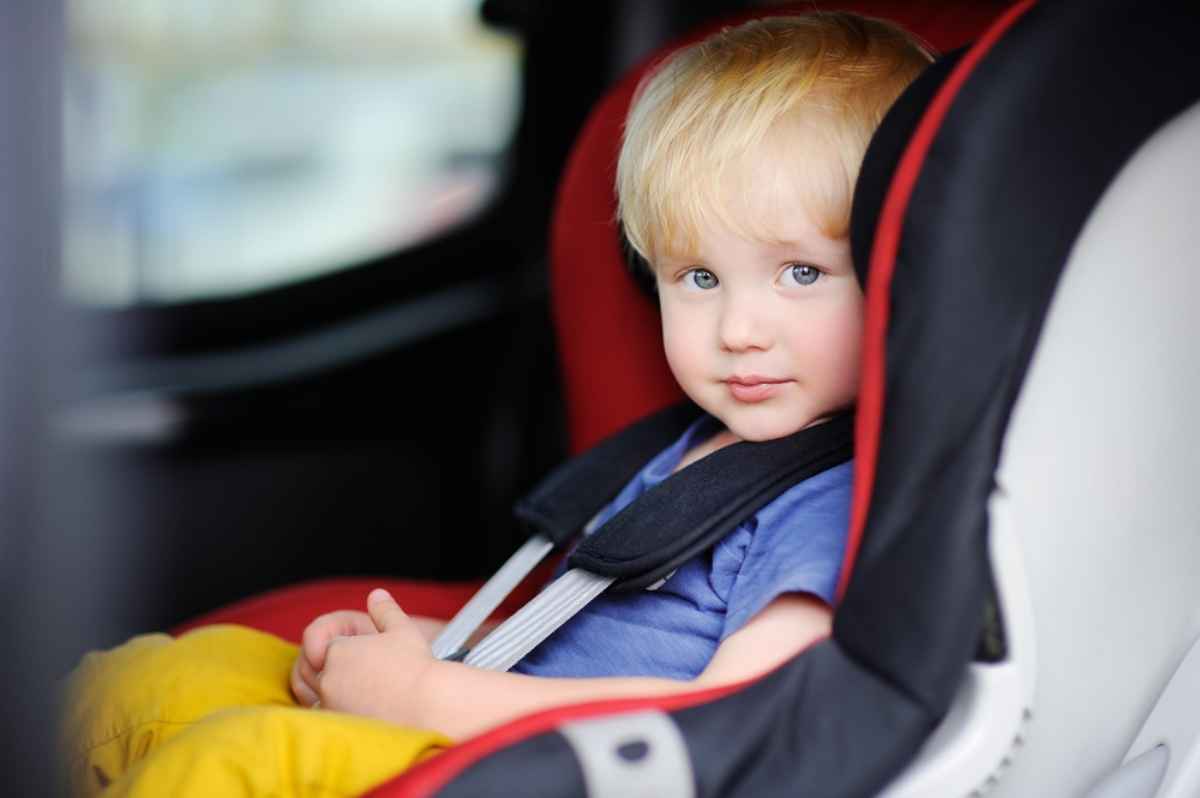
Rear-Facing, Forward-Facing, and Booster Seats: What’s Allowed?
Not sure which seat your kid should be in? You’re not alone. Let’s simplify it.
- Rear-facing seats are non-negotiable for babies. If your child is under 15 months and shorter than 76 cm (about 2 feet 6 inches), this is the only legal setup. And if your camper has an active airbag in the front, the seat goes in the back. No debate. If you really need to use the front seat, that airbag must be completely turned off.
- Forward-facing seats come next, typically for kids between 9 and 18 kg (around 20 to 40 lbs). These need a five-point harness. Best spot? Still, the back seat.
- Booster seats are for bigger kids, usually between 15 and 36 kg (roughly 33 to 79 lbs) and under 135 cm tall (4.5 ft). They make sure the seatbelt lands where it should, not across your kid’s neck or stomach. Kids under 18 kg aren’t heavy enough for one yet.
- Regular seatbelts are only okay once your child is over 135 cm. But if they want to ride shotgun, they’ll need to be at least 150 cm (just under 5 feet) if there’s an active airbag up front.
Renting vs. Bringing Your Own Car Seat in Iceland
There’s one question every parent faces early on: Rent a car seat when you get there, or bring yours from home?
Both options can work, but they come with different trade-offs. Iceland has strict rules, and only car seats that meet EU safety standards are legal. That means most North American models won’t make the cut, even if they seem safer or comfier.
So let’s break it down and help you figure out which route makes more sense for your trip.
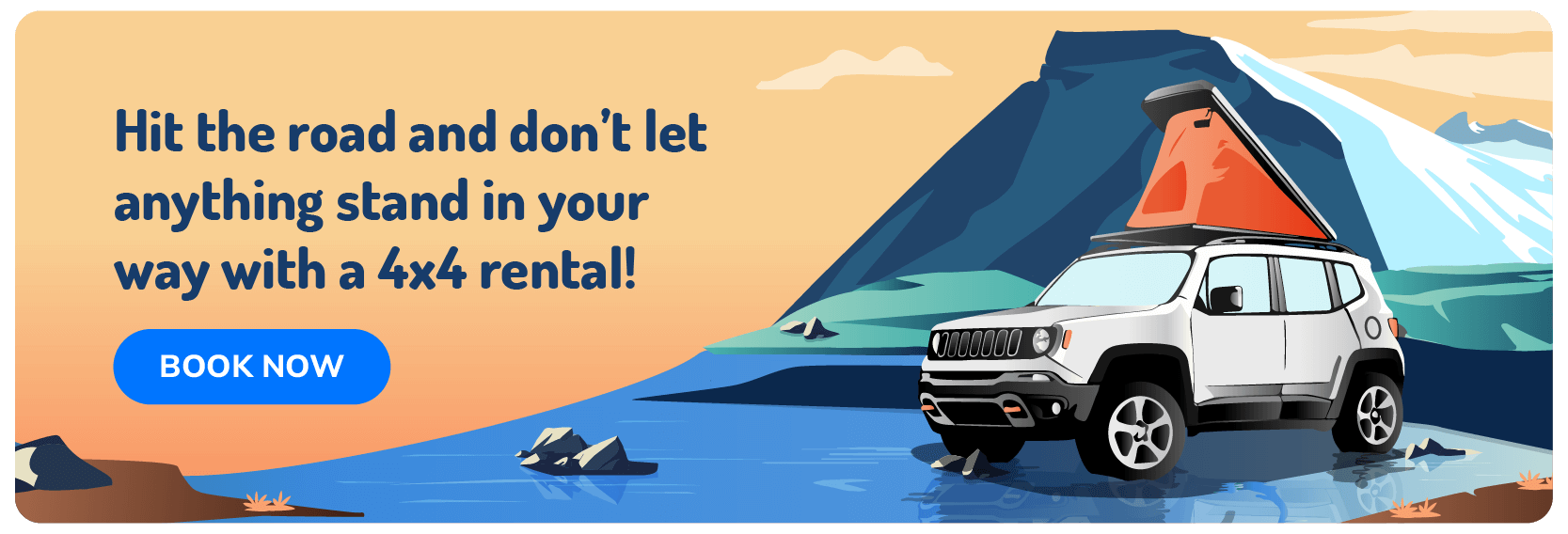
Pros and Cons of Renting a Car Seat in Iceland
|
Factor |
Renting a Car Seat |
Bring Your Own Car Seat |
|
Legality |
Fully compliant with EU standards and local law. |
Must meet EU standards. Most North American seat standards do not comply. |
|
Convenience |
Pick up directly from the rental agency. No airport dragging. |
Bulky to carry through airports and transfers. |
|
Cost |
Ranges from 5-42 USD. May also be offered as a flat fee. |
Free if you already own it, but airline baggage fees may apply. |
|
Availability |
Limited. Book early, especially in summer. |
Always with you, but may not fit securely in the rental. |
|
Condidtion |
Varies. Always inspect for wear, expiration, or missing parts. |
You know the seat, its history, and how to install it. |
|
Peace of Mind |
Certified seat, but cleanliness and proper use can be concerns. |
Familiar seat, child is already used to it. |
Where to Rent a Car Seat in Iceland
If you need a car seat in Iceland, then you're in luck. Most major camper and motorhome rental companies offer them as add-ons, making pickup simple and stress-free. That includes:
- Campervan Reykjavik
- Motorhome Iceland
- Campervan Iceland
- Camper Rental Iceland (yes, that’s us)
Most companies let you request a car seat during the booking process. Not sure what to book? Give the rental team a quick call or drop them a message. Mention your kid’s age, height, and weight so they know exactly what seat will fit. When you do, include your child’s age, height, and weight so they can match you with the right type of seat. It saves you the hassle later.
Traveling in summer or around the holidays? Car seats tend to disappear fast. Reserving early gives you one less thing to worry about.
While we’re confident you’ll find what you need with us (Camper Rental Iceland), it’s good to know there are other local providers offering EU-approved car seats if needed. Either way, make this part of your planning checklist. You don’t want to be figuring it out at the airport.
Tips for Ensuring the Seat Meets Safety Standards
Don’t just assume your car seat is good to go. A quick check at pickup can save you from a legal headache (or worse, a safety issue on the road).
- Look for certification. According to car seat laws in Iceland, only EU-approved seats are allowed, as we already mentioned earlier. That means you need to see an ECE R44/04 or R129 (i-Size) label. So remember that North American seats, even top-tier ones, aren’t legal here.
- Check the expiration date. Most seats have a lifespan of 6 to 10 years. You’ll usually find the date printed or stamped underneath.
- Inspect the condition. Look for cracks, loose straps, worn buckles, or anything that seems off. If something looks broken, it probably is.
- Check for cleanliness. Give it a quick wipe and look over. If your kid has allergies or sensitive skin, you’ll want to be sure it’s clean enough to use.
- Install it right. Some rental agents like us offer help with installation, but don’t rely on that alone. Make sure the seat is snug, level, and firmly secured before you drive off.
- Match it to your child. The seat should fit your child’s current size and not the one they had last summer. If you’re unsure, ask. It’s better to spend five minutes checking than to find out it doesn’t fit halfway through your trip.
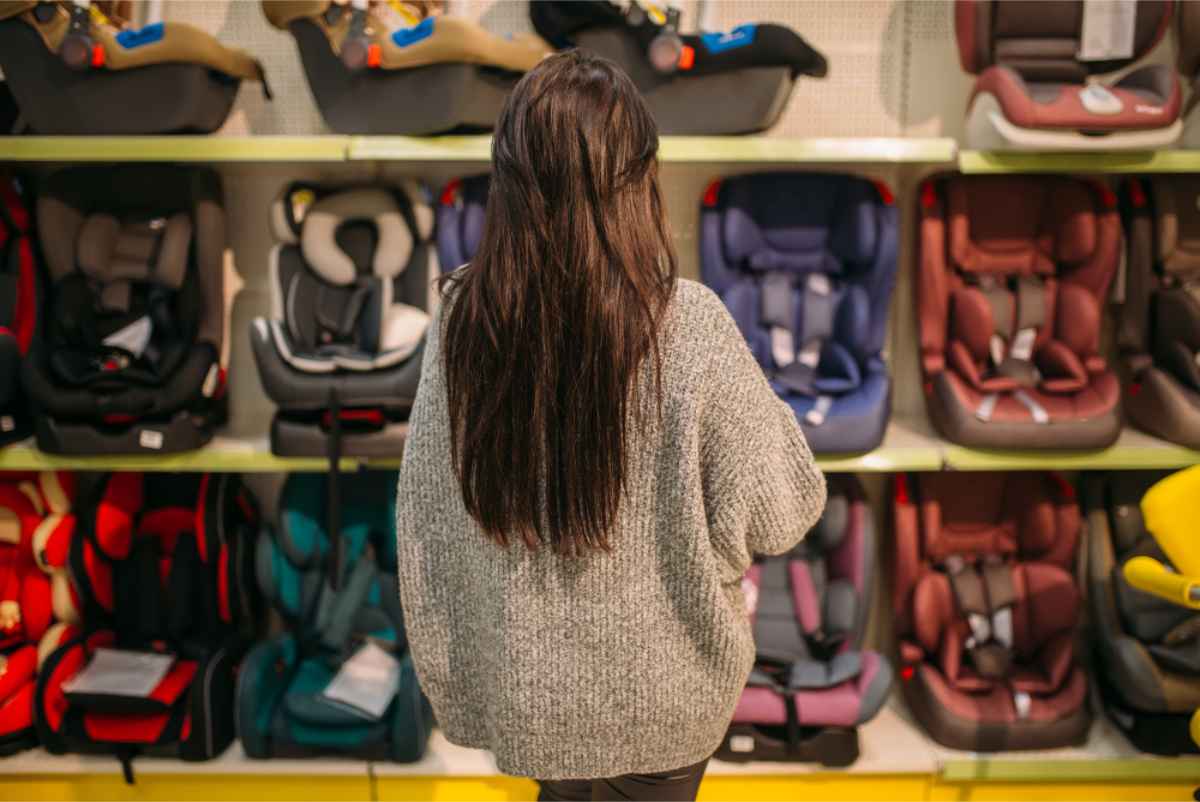
Additional Safety Tips for Driving with Kids in Iceland
Driving in Iceland is not your average school run. Once you leave Reykjavik or the main towns, the roads start to feel a bit wild. Think narrow lanes, sudden gravel stretches, and curves that come out of nowhere.
Weather is another wildcard. Because one minute it’s sunny, the next it’s foggy with sideways rain. Even in summer, snow isn’t off the table. These changes make it harder to stop quickly, which matters a lot when you’ve got kids on board.
How Iceland’s Road Conditions Affect Child Safety
Gravel roads need extra caution. Go slow to avoid skidding or kicking up stones. With little ones in the back, keeping things smooth and steady is more important than ever.
Then there are the single-lane bridges. They're all over the place, and they work on a first-come, first-go basis. Take your time approaching them, and don’t assume the other driver sees you.
Also, don’t be surprised if a sheep wanders across the road. It can happen sometimes, especially in the countryside. There aren’t many fences, so be ready to brake without sending your passengers flying.
Before each drive, check the weather and road conditions on official sites like Vedur.is and Umferdin.is. Then match your speed to what’s actually happening outside, not just what the speed limit says.
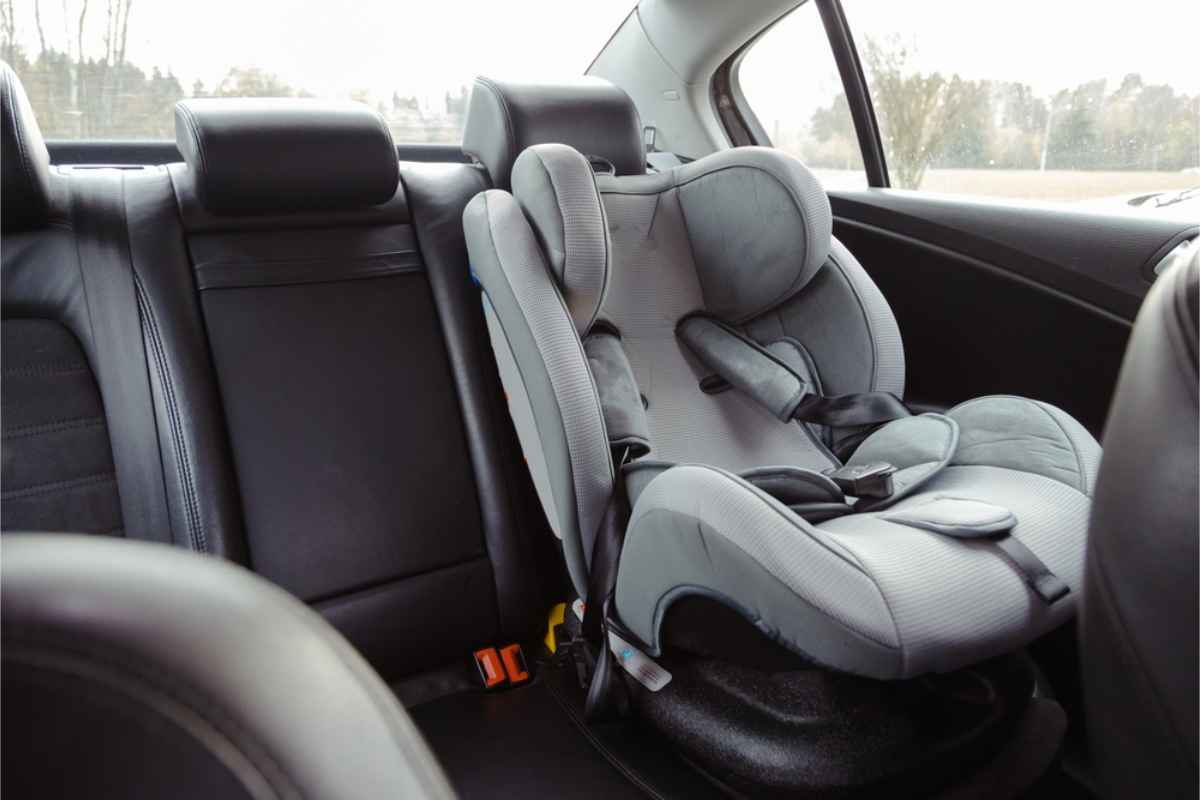
Must-Know Tips for a Safe Campervan Trip with Children
- Buckle up. Every person in the camper, no matter their size, needs to wear a seatbelt while driving. Kids under 135 cm ( 4.5 feet) must be in a proper car seat. No shortcuts here.
- Headlights stay on. Day or night, rain or shine, headlights need to be on. It’s the law in Iceland, and it helps keep you visible on those foggy or winding roads.
- Watch the wind. Iceland isn’t just breezy. It’s full of strong gusts that come out of nowhere. Campervan doors can slam open with serious force. Don’t let kids open or close them alone unless you want a bent door or bruised fingers.
- Get the right insurance. Wind damage, chipped windshields, and gravel scrapes are common. A full insurance package can save you a world of financial pain.
- Keep things organized. Space is tight in a camper. Assign each person a role, pack smart, and make sure essentials like flashlights, warm clothes, and sleepwear have a set place. Less clutter means fewer accidents.
- Rest up. Driving tired is dangerous. Plan breaks, stretch those legs, and switch drivers when you can.
- Supervise carefully. Iceland’s nature is raw. Campsites and hiking spots often don’t have fences. Stay close to the kids, especially near cliffs, water, or geothermal areas.
- Don’t stop in the road. As tempting as that perfect photo spot might be, never stop in the middle or on the edge of the road. Use pull-offs or parking areas instead.
Essential Packing List for Families Traveling to Iceland in a Camper
Clothing & Comfort
- Thermal base layers, wool socks, and sweaters
- Waterproof and windproof jackets and pants
- Warm hats, gloves, and scarves
- Sturdy waterproof boots and spare shoes
- Pajamas and cozy sleepwear for cold nights
- Swimsuits for hot springs and geothermal pools
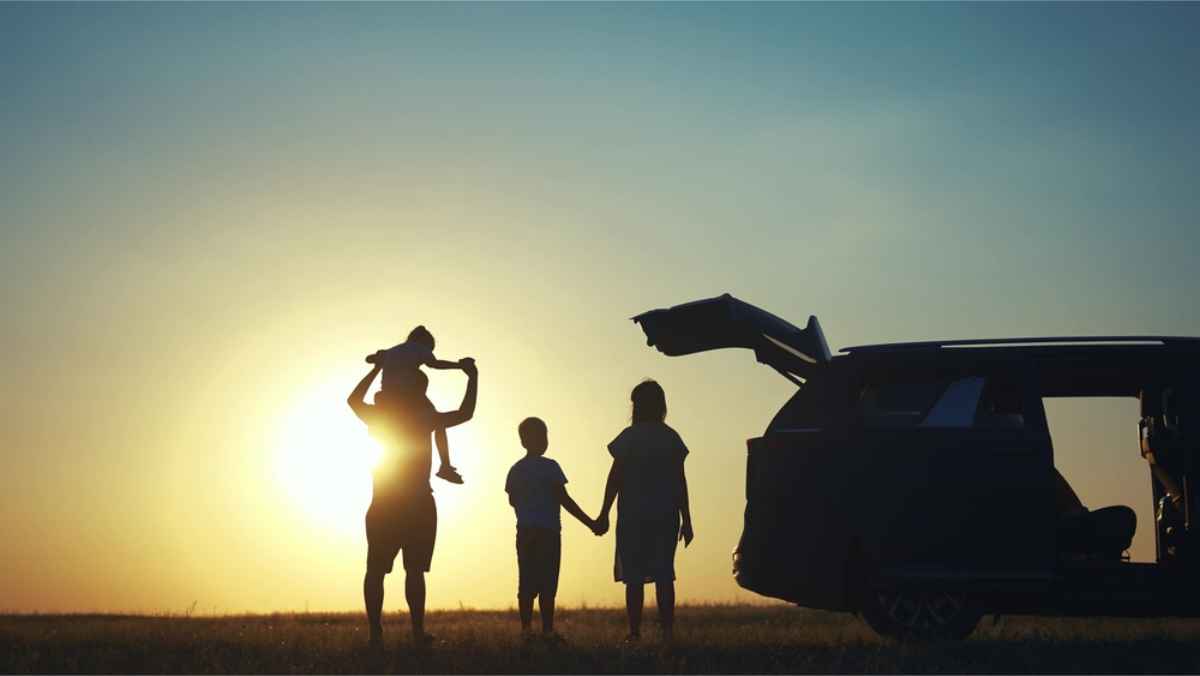
Child Essentials
- EU-approved car seat or booster (if not renting)
- Lightweight stroller for toddlers
- Favorite books, toys, or games
- Sleep mask to block the midnight sun
Health & Safety
- First aid kit with meds for fevers, colds, and scrapes
- Portable bottle or food warmer
- Extra blankets for chilly nights
- Sunscreen and child-safe sunglasses
Organization & Campervan Living
- Packing cubes or duffel bags for easy access
- Reusable food bags and clips for leftovers
- Large refillable water bottles
- Head torch or flashlight for late-night tasks
- Power inverter and extra chargers
- Daypack for hikes and quick stops
Food & Kitchen
- Easy snacks and meals that don’t need a fridge
- Cooking gear (check if your camper comes with it)
- Paper towels and wet wipes for the messes you didn’t plan for
Iceland Car Seat Laws Are Too Important to Ignore
Iceland car seat laws aren’t complicated, but they are strict with good reason. Whether you're cruising along fjords or bouncing down gravel roads, your child’s safety depends on getting the seat setup right.
Measure their height, match the right seat, and double-check the installation before you drive. If you're planning to rent a campervan in Iceland, we've got you covered. You can request a car seat during booking, or reach out, and we’ll help you sort it.
Simple, safe, and road-trip ready. That’s how we roll. Now go enjoy Iceland and just make sure everyone in the van is buckled in right.
